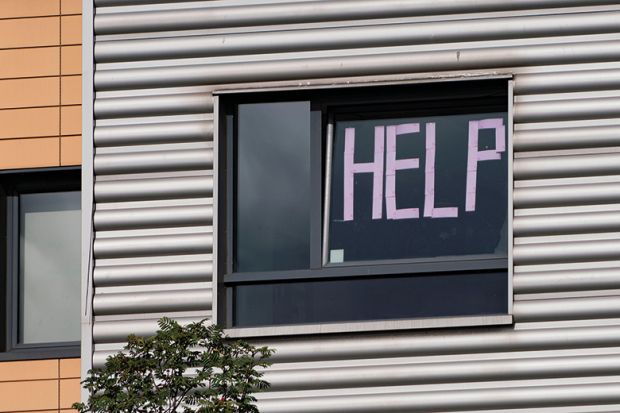After the spring lockdown, and the cautious attempts at reopening over the summer months, we have moved inevitably into an autumn dominated by second waves and unavoidable trade-offs.
With the coronavirus regaining a hold in many countries, it is perhaps folly to commit any thoughts to print – the likelihood being that things will have moved on by the time they reach their audience.
But as of the time of writing it has already become clear, as it probably always was, that the return to campus for the start of a new academic year has created new wells for the virus, triggering local lockdowns and, no doubt, anguished recalculations among all those involved in making the near impossible decisions about how to bring back students safely.
Perhaps it is a mistake to say that it is near impossible; the reality is that all such decisions are now about the trade-offs, the opportunity costs, and the level of risk that is acceptable.
Since many of those will have very different views about these questions, not least because the impact of those decisions will be so varied on individuals, this is no simple equation to compute.
It is partly a question of national priorities. Education, most agree, must be at the very top of the list – the debate about whether schools are more or less important than pubs has always seemed contrived to the point of absurdity.
But equally, it is clear that schools, and schoolchildren, are less able than universities to operate remotely, so the debate about whether and how much face-to-face contact is sensible or even necessary in higher education is a live one.
On another level, the trade-off is more personal. How are the virtues of virus-resistant online delivery weighed against the important social aspects of a university student’s experience, which are much harder to recreate virtually?
Is it reasonable to send students off to campus, perhaps for the first time, and only then to fire up the debate about whether they should be banned from returning home for Christmas?
And what about university lecturers – how reasonable is it to declare that they are now key workers (they weren’t during the UK’s first lockdown)? And how sustainable is it for them to continue to deliver twin-track teaching, both online and in person, which in our opinion pages this week is described as a workload that would have made Sisyphus weep.
As for the health impact, since we are clearly going to have to live with this virus for the foreseeable future, what is acceptable in this most serious of trade-offs: between those whose health will be put in jeopardy directly by coronavirus, and the debilitating effects of continuing to mothball life as we know it? One salient factor here is the emerging evidence that while young, healthy people are very unlikely to die from the virus, the long-term effects on health can be diverse and debilitating.
In our cover story this week, we explore the case study of the Netherlands, a sector which, as one vice-chancellor tells us, is constitutionally geared to working co-operatively (a condition that goes back to the management of flood waters, in a country which if all did not work together would soon be under water). Perhaps there are lessons from its response that can be useful elsewhere.
In our news pages, we look at how research-intensive universities in the UK have set up their own on-campus testing services to try to combat the virus in their own communities – and the success or otherwise of those efforts. We also consider how this localised response sits alongside attempts to develop national testing services, and the trade-offs at play.
For higher education, there is a big question underlying this: if universities, collectively, cannot get enough tests and so cannot control the spread of the virus on campus (or in student accommodation) then might it get to the stage where the government has to order their closure?
It is certainly a possibility, and some would argue a sensible course of action given the early indications of how difficult containment is as a strategy.
Perhaps it has already happened – I am writing this several days before it appears in print, after all.
POSTSCRIPT:
Print headline: A complex equation
Register to continue
Why register?
- Registration is free and only takes a moment
- Once registered, you can read 3 articles a month
- Sign up for our newsletter
Subscribe
Or subscribe for unlimited access to:
- Unlimited access to news, views, insights & reviews
- Digital editions
- Digital access to THE’s university and college rankings analysis
Already registered or a current subscriber? Login

